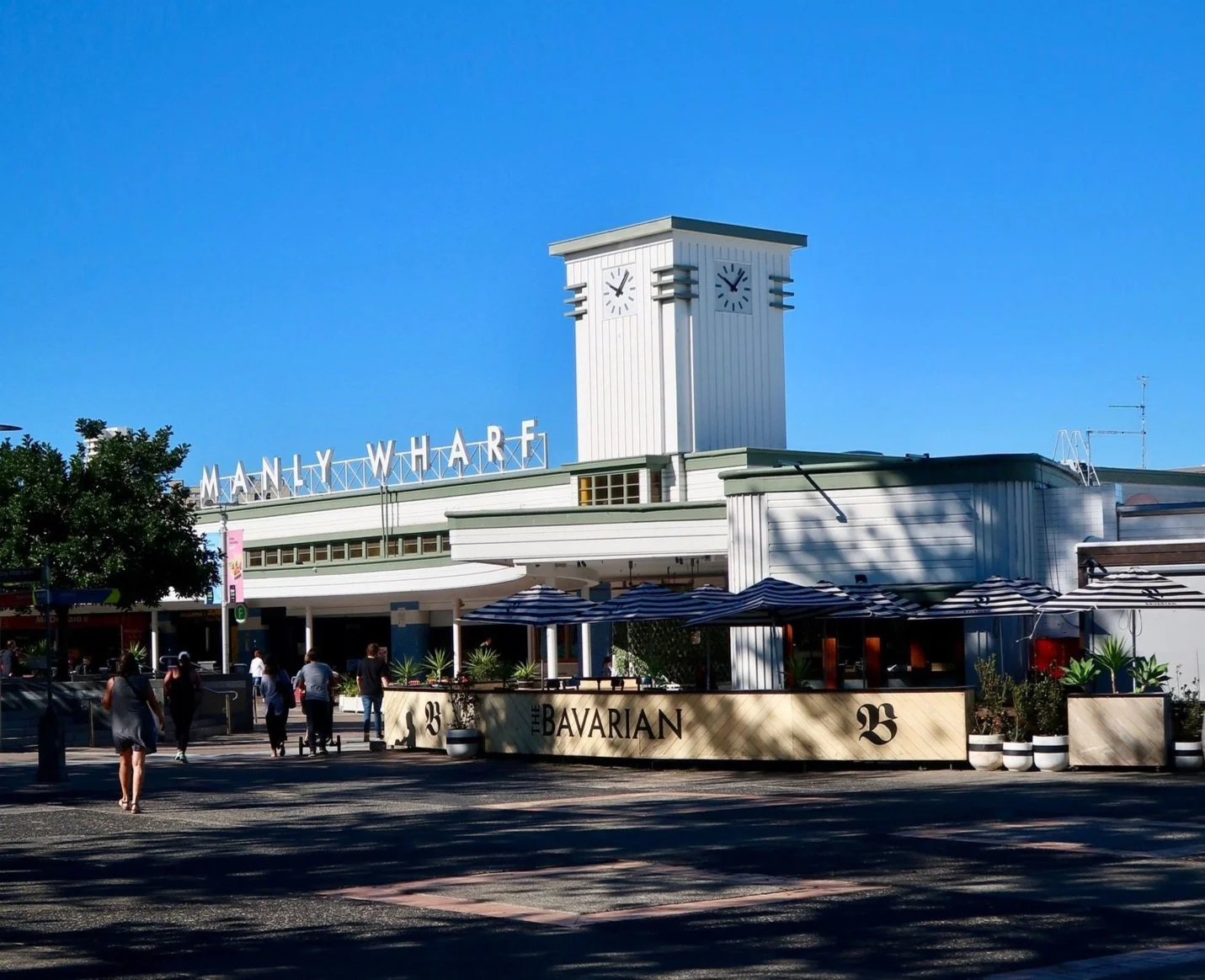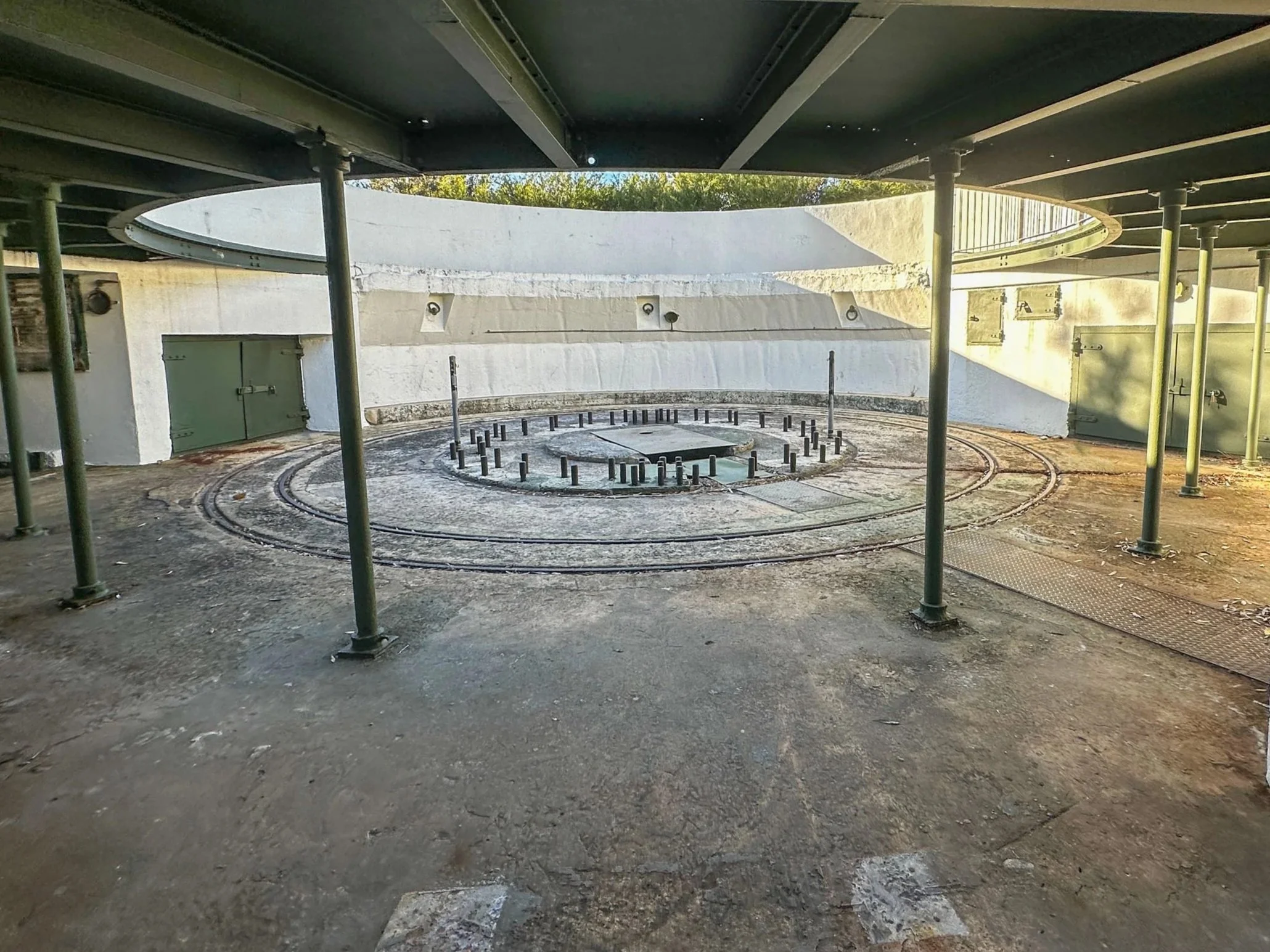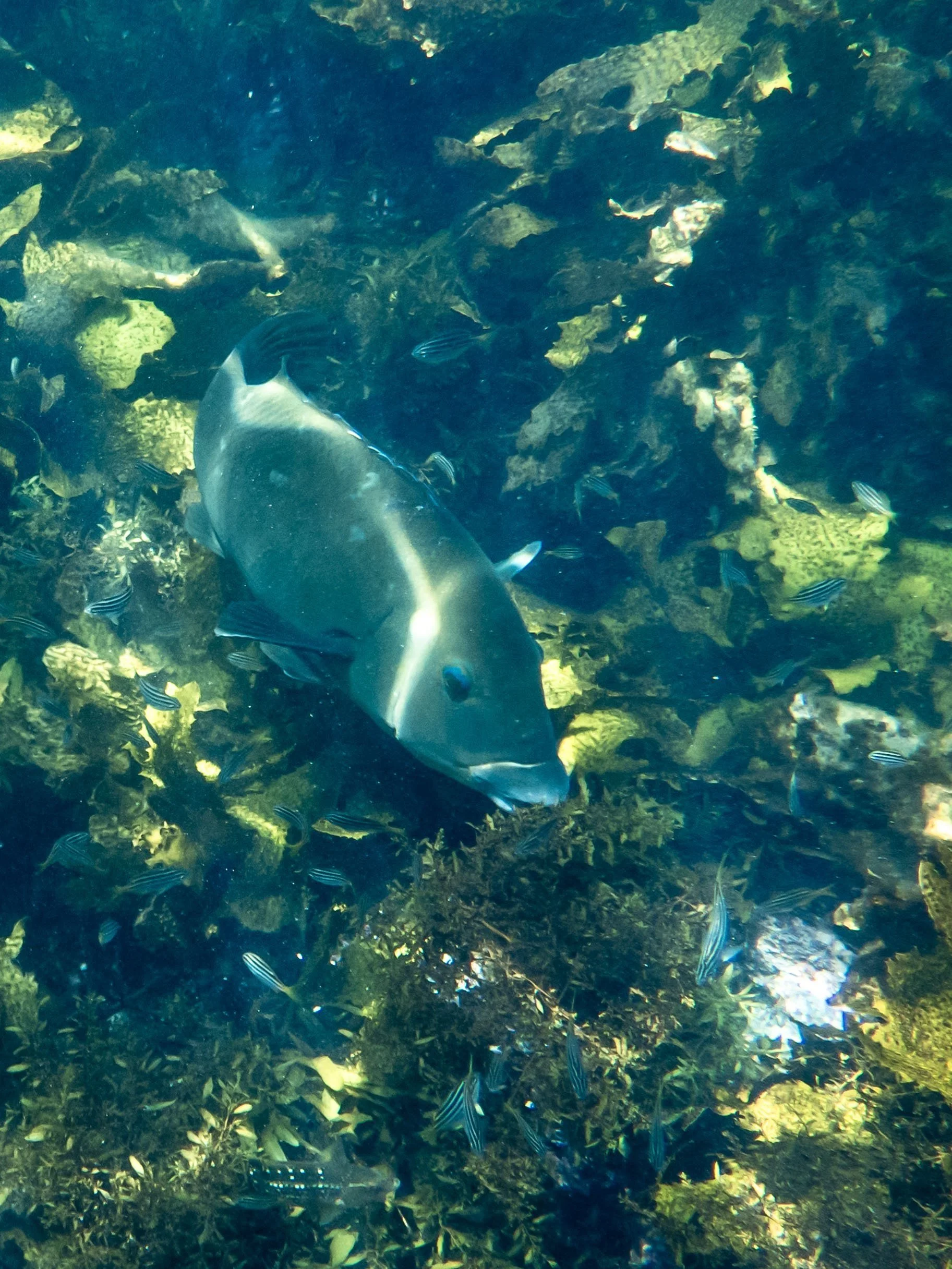Manly to North Head loop
This is one very special walk. It’s sometimes suggested as an extension option on the Spit to Manly walk, but as it’s over 10 kilometres in its own that might take some doing. And besides, to get the most out of this walk with its beaches, views, history and more, you’ll want to take your time.
Manly is famous for its beaches and you’ll step onto at least six of them as you follow the trail - Manly, Fairy Bower and Shelly Beach near the start of the walk and Collins, Little Manly and East Manly Cove Beach toward the end.
-
This iconic trail showcases the best of Manly, offering golden beaches and stunning views along with glimpses into Australia's military and maritime heritage.
Distance <10km Time 3-4 hours
Level of Difficulty Moderate -
Panoramic views
Beautiful beaches with great swimming, surf and snorkel spots
Wildlife spotting including whales in migration season
History
Plenty of places to eat and drink, many with views
Native bushland with seasonal wildflowers
-
If you’ve brought the car and don’t mind paying for parking (or you have a Northern Beaches parking permit), it’s nice to start and end this walk at one of the many beaches along the trail. As well as being great places to cool off, most have picnic areas and/or cafes and other facilities nearby.
If you’re walking in the summer months, go early as shade is limited for much of the walk. If the temperatures get very high, National Parks may close the trail so check their website before heading out.
Hat and sunscreen recommended
If you hope to see whales from the headland, June-September are best (but no promises).
If you don’t have the time or inclination to do the whole walk, the Manly to North Head Loop Service will take you back to the ferry terminal.
National parkland - NO DOGS
Getting to Manly
The easiest way to get to the start of this trail is by ferry from Circular Quay. You could drive and park on a side street or in a car park if you choose to start at a different point, but much of the parking is metered and/or time limited.
For simplicity, I’ve put the trail start at Manly ferry wharf but as it’s a loop walk you could start anywhere.
The Trail
The Manly to North Head loop walk is about 10 kilometers return and typically takes 3-4 hours to complete, depending on your pace and time spent taking photos, swimming at one of the many beaches, or exploring the various attractions and food stops along the way.
The trail is rated as moderate, with some steep sections and occasional uneven terrain, but is generally well-maintained and suitable for most fitness levels.
Manly Wharf to Shelly Beach
Walking in a clockwise direction, cross the road from the ferry wharf to the Corso, a pedestrian shopping mall filled with cafes, surf and souvenir shops and weekend markets.
At the end of the Corso, cross the road to the Manly Beach, world famous for its waves and Norfolk Pine trees and worth coming back to later of you’ve got the time.
Head south along Manly Beach to the swimming pool at Fairy Bower and the pathway to Shelly Beach, a popular swimming and picnic beach and arguably Sydney’s best snorkel spot. There’s a cafe and restuarant here as well as change rooms and toilets.
At the far end of Shelly Beach, look for a set of steps that lead to the car park. Beyond the car park you’ll see more steps leading up to bushland. Take these.
Continue up along a somewhat rocky trail section until you reach a sandstone wall with a little (and I do mean little) gate through which you crouch to enter the National Park and former military precinct.
This path, known as the Blue Fish Trail will take you into North Head Sanctuary.
North Head Sanctuary
North Head Sanctuary is a nature refuge and former defence site managed by the Harbour Trust. As well as being home to a host of native plants and animals it contains significant historic landmarks, many of which you’ll see as you on the trail.
Following the path outlined on the map walk, through the parade ground of the Barracks Precinct, past remnants of North Fort and onto the Memorial Walkway (more on the history below).
There is also an optional side trail up here, (shown on the map), which leads to the Hanging Swamp, a pretty area alive in the warmer months with birdsong and a chorus of frogs.
Beyond the Memorial Walkway is the roadway and a footpath leading to the not to be missed Fairfax Walk with its two lookouts and jaw-dropping views.
The views from the end of the headland are hard to beat. On one side you have the ocean reaching far out into the distance, and on the other, the sprawling harbour and city skyline. Sunrise from this spot is glorious.
The two Fairfax lookouts - Yiningma and Burragula are perfectly placed to take in the surrounds and the structures themselves are striking in their design and sit beautifully in the landscape.
Head back towards the cafe and the Visitor Centre behind it and follow the signs leading to the Third Quarantine Cemetery. More great views to be had at both).
Beyond the cemetery, follow the banksia-lined boardwalk path up to where you’ll loop behind the Barracks Precinct and then on to North Head Scenic Drive.
Beach hop back to Manly
Follow North Head Scenic Road until you see a sign for Collins Beach on the left. About 800m down the road is a carpark adjacent to a Police building. From the car park take the bush trail to petite and pretty Collins Beach (about five minutes). On the far side of the beach are some stairs which lead to a bush trail that comes out at Stuart St.
You can follow the road here to get directly to Little Manly Beach or wander through the Point Reserve before making your way around to the beach.
Little Manly Beach with its cafe, playground and enclosed swimming area is a favourite with families. And it’s also a nice place to stop for a dip or a coffee if you’re so inclined. From here, continue down Stuart Street to its end. Turn right onto The Esplanade crossing the road to join the pedestrian path that leads down past the Skiff Club to the last of the six beaches, Manly Cove.
From Manly Cove it’s a short walk back to the ferry.
Things to see and do
History
North Head Sanctuary holds great significance in both Aboriginal and European Australian history.
North Head was known as Car-rang-gel to To the local Gayamagal people, who used the area for fishing, gathering, and ceremony.. Rock engravings, burials, middens and more, speak to their long connection to this place.
Some of the earliest interactions between Aboriginal people and European colonists occurred in the North Head area.
In 1788, members of the First Fleet led by Captain Arthur Phillip, made contact with the local people. The following year, three locals –Arabanoo, Bennelong and Colbee – were captured by settlers to be used as interpreters. And in 1790, at Collins Flat Beach, Governor Phillip was speared in the shoulder at a feast conducted over a stranded whale.
The North Head Quarantine Station operated from 1832 to 1984. Over 150 years, more than 580,000 migrants and travellers passed through the station. The Third Quarantine Cemetery which is on the path of this walk, was constructed as an overflow cemetery It holds the remains of some 240 people known to be buried there between 1881 and 1925. They died of diseases such as Bubonic plague, Spanish flu, smallpox and scarlet fever. Many of the graves are unmarked.
From the 1870s onwards North Head became a crucial component of Sydney's harbour defences. North Fort which was established here in 1936 formed a vital part of a defence system that spanned 300km of coastline during the World War Two. At the height of the war, North Fort was manned twenty-four hours a day. There are several old gun pits on and off the path and tunnels that run between them which can be explored on a guided tour.
After the war, the Army School of Artillery opened at North Head. The Barracks complex contains a collection of art deco buildings that include a parade ground, service areas and sheds. The school was relocated to Puckapunyal, Victoria in 1998 and the buildings are now occupied by various businesses and service providers.
Australia’s Memorial Walk, links five monuments built to commemorate significant periods of conflict in Australia’s history. The monuments and paving stones honour those who served and supported the defence of Australia in times of war and in peace-keeping.
Wildlife
North Head Sanctuary is a refuge for echidnas, reptiles and frogs as well as vulnerable species such as the endangered Long-nosed bandicoot. On your walk you may see water-dragons or an echidna if you’re lucky, and watch out for snakes in the warmer months.
Around 150 species of bird are regularly spotted at North Head and its surrounds. Rainbow Lorikeets, Willy-wagtails, Little Wattlebirds and New Holland honeyeaters can be seen even in the winter months, foraging among the native vegetation. And larger birds such as cormorants, pelicans, White-bellied sea-eagles and Goshawks are regularly seen scouring the coast.
During migration season, North Head is a popular whale-watching spot. From May to November, Humpback and Southern right whales are often spotted making their way first up and then back down the coast.
And the waters around Shelly Beach are alive with sea creatures of all kinds. Known as Cabbage Tree Bay, this area is a protected marine reserve. If you get the chance to snorkel here (preferably on a calm day at high tide), you’ll likely meet local favourite, the Eastern blue groper. You may also spot Stingrays, Dusky flathead and various small fish. In deeper waters, Giant Cuttlefish, Port Jackson sharks and Wobbegongs are common.
Eat & Drink
There are plenty of restaurants, kiosks and cafes along the way where you can stop for a coffee, cold drink or a bite to eat. There are too many to mention here, but if you like a view with your meal, here are a few suggestions.
As a halfway reward, Bella Vista cafe is a good choice. They offer breakfast and lunch and a prime spot to soak up the views. The Boathouse at Shelly Beach also does breakfast and lunch as well as afternoon cocktails. The Boathouse looks out over the sand and sea as does Ripples at Little Manly which offers lighter meals such as sandwiches and snacks.
If you want to wait until the end of the walk you’re spoilt for choice in Manly. Venues come and go here but for a different outlook just by the ferry, The Pavilion at Manly Cove has an alfresco bar that does pizzas and the like as well as a restaurant which has a more substantial Italian inspired menu.
Nearby Trails
If you like this area and want to explore it more, try one of the following three trails.
The Q Station Walk can be added to this one or done on its own. This relatively short walk explores the natural beauty and rich history of the old Quarantine Station at North Head.
The Spit to Manly is another beautiful long walk. The views are spectacular and there are plenty of places to swim, play and picnic along the way.
The Manly to Dee walking trail takes you further north, winding its way along rugged cliffs and golden sandy beaches, with a number of cafes, picnic spots and playgrounds en route.






























